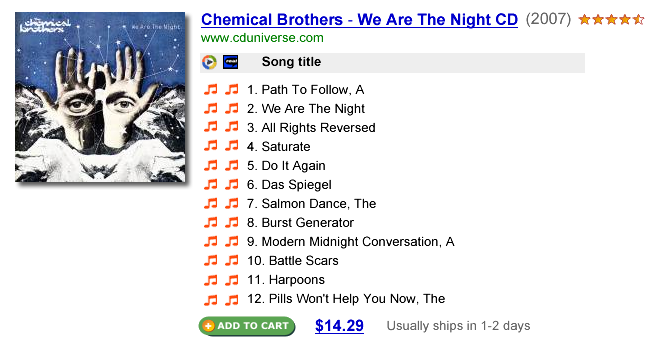本页介绍了如何为您自己的网站自定义搜索结果摘要。要呈现自定义摘要,您必须向网页添加结构化数据。
概览
可编程搜索引擎通过向用户显示一个摘要(方便搜索用户了解网页中的内容)而帮助用户找到相应的网页。要详细了解摘要,请参阅有关搜索结果剖析的网站站长中心博文。如果您不喜欢由可编程搜索引擎算法创建的标准摘要,可以自行创建摘要。您可以直接在摘要中展示图片缩略图、摘要、日期、作者信息、评分和价格等关键信息。在搜索结果中包含最相关的信息可使您网站中的网页对用户更有吸引力。
下图显示了您可以自定义搜索结果中摘要的各种方法。
图 1:包含评分、价格范围和评价的结果摘要。

图 2:包含格式、链接、图片和比较信息的结果片段。

图 3:包含文档类型、作者、网页浏览量和评论的结果代码段。

图 4:格式丰富的搜索结果摘要,提供多媒体访问和按钮(“添加到购物车”)。

使用可编程搜索元素创建富媒体搜索结果
从本质上讲,创建结构化摘要涉及以下步骤:
- 在您的网页中提供结构化数据。
当可编程搜索引擎将您的网页编入索引时,它会识别并保留这些元数据。
- 在您的可编程搜索引擎的搜索结果中提取这些结构化数据。
可编程搜索引擎服务器可以返回搜索结果以及 JSON 格式的结构化数据。
- 创建表示层,将结构化数据转换为格式化的 HTML。
呈现层是一组代码(例如 JavaScript、PHP、JSP 和 ASP),可将原始数据转换为向用户显示的格式。对于可编程搜索引擎,您可以:
如需详细了解结构化数据提取,请参阅结构化数据页面;如需使用可编程搜索元素创建表示层,请参阅 Programmable Search Element 页面。
探索其他功能
自定义摘要可以很好地与多项其他可编程搜索引擎功能配合使用:
- 如需详细了解如何更改结果的顺序,请参阅更深入地探究搜索结果。
- 如需详细了解 Google 支持的结构化数据,请参阅提供结构化数据。
- 如需详细了解可编程搜索元素,请参阅 可编程搜索元素文档。
